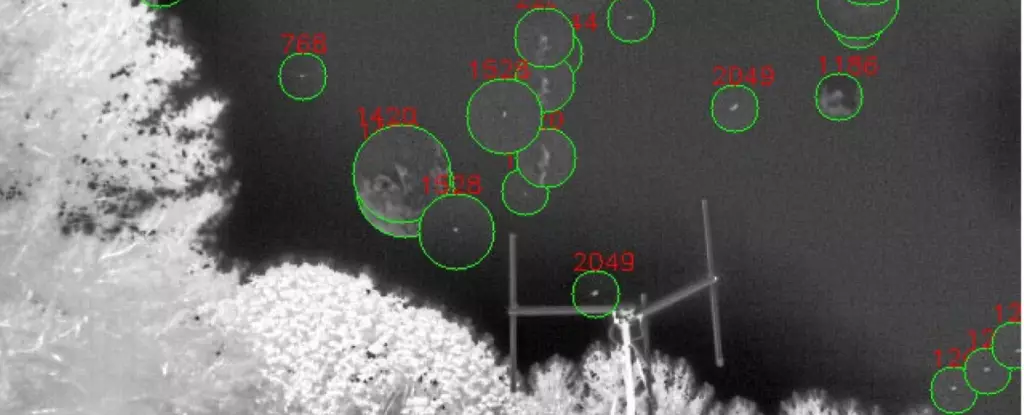In recent years, public interest in Unidentified Aerial Phenomena (UAP) has surged, especially following the release of a comprehensive report by the Office of the Director of National Intelligence (ODNI) in 2021. This document provided crucial insights into government knowledge of UAP, yet it left many gaps, particularly in scientific transparency. As citizens look skyward, there is a palpable yearning for reliable data about these unexplained aerial encounters. The Department of Defense has, since then, consistent yearly reports on UAP through the All-domain Anomaly Resolution Office (AARO). However, skepticism still looms large, primarily due to the lack of publicly accessible scientific findings.
Charting New Territory: The Harvard-Smithsonian Initiative
To navigate the foggy waters of UAP research, a groundbreaking study has emerged, spearheaded by the talented minds at the Harvard-Smithsonian Center for Astrophysics (CfA) and the Galileo Project. This ambitious initiative aims to deploy a sophisticated instrument known as the Dalek—named playfully after the villainous machines from the iconic *Doctor Who* series. This multifaceted tool is not merely a flashy gimmick; it represents a significant leap in our quest for extraterrestrial understanding, building on recommendations released by NASA in 2023 to develop state-of-the-art detection tools capable of adapting to rapid data acquisition demands.
Researcher Laura Domine, at the helm of this initiative, has rallied a team of astronomers and scientists from various respected institutions, including Whitin Observatory and the Scientific Coalition for UAP Studies. Their goal? To use cutting-edge technology to pinpoint potential evidence of crafts that could potentially originate from beyond our planet.
Innovative Technology at the Forefront
The Dalek isn’t focused solely on visual data; instead, it embraces a multifaceted approach integrating multiple sensory inputs. The strategy is reminiscent of NASA’s insight that to understand UAP, one must accumulate diverse data types, capturing not just visual characteristics, but also thermal, auditory, and movement data. This robust framework could significantly enhance our understanding of these enigmatic phenomena.
Candidly addressing the secrecy that often shrouds government studies, Professor Avi Loeb, leader of the Galileo Project, argues that while much of the U.S. data is classified, the vast expanse of the sky is not. The initiative’s implementation of all-sky observatories—presently active across various states—is a tangible step toward democratizing UAP research. They are already providing an influx of data, capturing around 100,000 objects monthly, as disclosed by Loeb. The scale of this operation not only shines a light on UAP but positions the Galileo Project as a pioneering force in astrobiology and space exploration.
Big Data Meets Machine Learning
In a world increasingly driven by technology, the embrace of machine learning in the analysis of UAP data underscores the convergence of traditional scientific inquiry and modern computational techniques. The machine learning algorithms employed by the Galileo Project, including YOLO for object detection and SORT for trajectory tracking, allow the team to sift through enormous datasets effectively. This leads to the identification of outliers—potentially groundbreaking discoveries. Remarkably, within the first five months of operation, the observatories classified approximately 500,000 observed objects. Alarmingly, about 16% of these were identified as outliers worthy of further investigation.
What sets the Galileo Project apart is its commitment to transparency and collaboration. By systematically examining and sharing findings, they challenge dominant narratives and urge a reevaluation of the prevailing skepticism surrounding UAPs. This approach also resonates with the scientific community’s increasing focus on open data protocols.
Setting the Stage for Potential Cosmic Revelations
The ultimate vision of this research is to traverse beyond mundane explanations for elusive UAPs and potentially unveil evidence of technologically advanced life. If even a fraction of one in a million objects displays characteristics beyond human capability, it could lay claim to the most monumental finding in human history. It’s an audacious goal, but one that is steadily being pursued through meticulous research.
With the promise of triangulating data through multiple detectors and enhancing algorithms, the future of UAP research looks promising. Professor Loeb eloquently articulates the ambition underlying the Galileo Project: seeking clarity amidst ambiguity. As this paradigm of inquiry unfolds, we inch closer to unveiling the secrets of the cosmos and perhaps discovering that we are not alone after all.
In essence, the unfolding narrative of UAP research not only calls for scientific rigor but also offers a dynamic platform for public engagement—one where curiosity meets the enduring quest for knowledge in our vast universe.


Leave a Reply